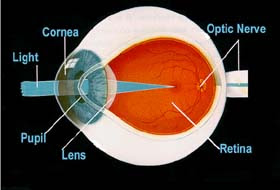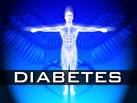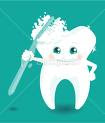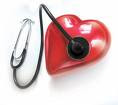Next in line is the lens which acts like the lens in a camera, helping to focus light to the back of the eye. Note that the lens is the part which becomes cloudy and is removed during cataract surgery to be replaced by an artificial implant nowadays.


The very back of the eye is lined with a layer called the retina which acts very much like the film of the camera. The retina is a membrane containing photoreceptor nerve cells that lines the inside back wall of the eye. The photoreceptor nerve cells of the retina change the light rays into electrical impulses and send them through the optic nerve to the brain where an image is perceived. The center 10% of the retina is called the macula. This is responsible for
your sharp vision, your reading vision. The peripheral retina is responsible for the peripheral vision. As with the camera, if the "film" is bad in the eye (i.e. the retina), no matter how good the rest of the eye is, you will not get a good picture.
The human eye is remarkable. It accommodates to changing lighting conditions and focuses light rays originating from various distances from the eye. When all of the components of the eye function properly, light is converted to impulses and conveyed to the brain where an image is perceived.
Glossary of Eye Terms:
your sharp vision, your reading vision. The peripheral retina is responsible for the peripheral vision. As with the camera, if the "film" is bad in the eye (i.e. the retina), no matter how good the rest of the eye is, you will not get a good picture.
The human eye is remarkable. It accommodates to changing lighting conditions and focuses light rays originating from various distances from the eye. When all of the components of the eye function properly, light is converted to impulses and conveyed to the brain where an image is perceived.
Glossary of Eye Terms:

Anterior Chamber
The cavity in the front part of the eye between the lens and cornea is called the Anterior Chamber. It is filled with Aqueous, a water-like fluid. This fluid is produced by the ciliary body and drains back into the blood circulation through channels in the chamber angle. It is turned over every100 minutes.
Chamber Angle
Located at the junction of the cornea, iris, and sclera, the anterior chamber angle extends 360 degrees at the perimeter of the iris. Channels here allow aqueous fluid to drain back into the blood circulation from the eye. May be obstructed in glaucoma.
Ciliary Body
A structure located behind the iris (rarely visible) which produces aqueous fluid that fills the front part of the eye and thus maintains the eye pressure. It also allows focusing of the lens.
Conjunctiva
A thin lining over the sclera, or white part of the eye. This also lines the inside of the eyelids.Cell in the conjunctiva produce mucous, which helps to lubricate the eye.
Cornea
The transparent, outer "window" and primary focusing element of the eye. The outer layer of the cornea is known as epithelium. Its main job is to protect the eye. The epithelium is made up of transparent cells that have the ability to regenerate quickly. The inner layer of the cornea is also made up of transparent tissue, which allows light to pass.
Hyaloid Canal
A narrow channel that runs from the optic disc to the back surface of the lens. It serves an embryologic function prior to birth but none afterwards.
Iris
Inside the anterior chamber is the iris. This is the part of the eye which is responsible for one's eye color. It acts like the diaphragm of a camera, dilating and constricting the pupil to allow more or less light into the eye.
Pupil
The dark opening in the center of the colored iris that controls how much light enters the eye.The colored iris functions like the iris of a camera, opening and closing, to control the amount of light entering through the pupil.
Lens
The part of the eye immediately behind the iris that performs delicate focusing of light rays upon the retina. In persons under 40, the lens is soft and pliable, allowing for fine focusing from a wide variety of distances. For individuals over 40, the lens begins to become less pliable, making focusing upon objects near to the eye more difficult. This is known as presbyopia.
Macula
The part of the retina which is most sensitive, and is responsible for the central (or reading)vision. It is located near the optic nerve directly at the back of the eye (on the inside). This area is also responsible for color vision.
Optic Disc
The position in the back of the eye where the nerve (along with an artery and vein) enters the eye corresponds to the "blind spot" since there are no rods or cones in these location. Normally, a person does not notice this blind spot since rapid movements of the eye and processing in the brain compensate for this absent information. This is the area that the ophthalmologist studies when evaluating a patient for glaucoma, a condition where the optic nerve becomes damaged often due to high pressure within the eye. As it looks like a cupwhen viewed with an ophthalmoscope, it is sometimes referred to as the Optic Cup.
Optic Nerve
The optic nerve is the structure which takes the information from the retina as electrical signals and delivers it to the brain where this information is interpreted as a visual image. The optic nerve consists of a bundle of about one million nerve fibers.
Retina
The membrane lining the back of the eye that contains photoreceptor cells. These
photoreceptor nerve cells react to the presence and intensity of light by sending an impulse to the brain via the optic nerve. In the brain, the multitude of nerve impulses received from the photoreceptor cells in the retina are assimilated into an image.
Sclera
The white, tough wall of the eye. Few diseases affect this layer. It is covered by the episclera (a fibrous layer between the conjunctiva and sclera ) and conjunctiva, and eye muscles are connected to this.
Vitreous
Next in our voyage through the eye is the vitreous. This is a jelly-like substance that fills the body of the eye. It is normally clear. In early life, it is firmly attached to the retina behind it.With age, the vitreous becomes more water-like and may detach from the retina. Often, little clumps or strands of the jelly form and cast shadows which are perceived as "floaters". While frequently benign, sometimes floaters can be a sign of a more serious condition such as a retinal tear or detachment and should be investigated with a thorough ophthalmologic
examination.











